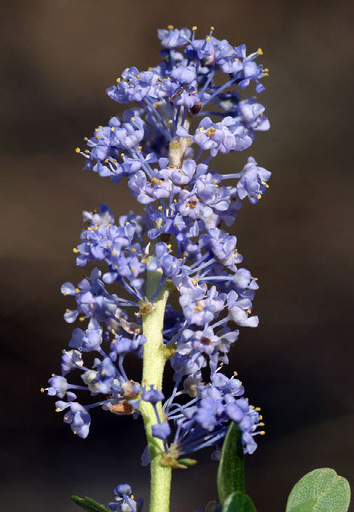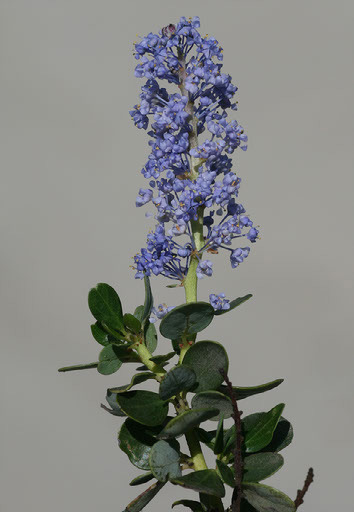Military Base Offers Safety for Rare Plants
Sandwiched between the densely populated Orange and San Diego counties in Southern California is the 125,000-acre US Marine Corp base Camp Pendleton. Less than 20 percent of its land has been developed. Bordered on its west by the Pacific Ocean, this military base acts as an ecological buffer in this highly urbanized region. Within Camp Pendleton, tidal estuaries, riparian corridors, coastal plains, rolling hills and canyons, and mountains that rise in elevation to 2,700 feet above sea level provide essential habitat for over 1,100 species of flora and fauna, including 18 federally listed threatened and endangered species and a free roaming herd of bison.
Hidden in the southern Santa Margarita Mountains, on the Pendleton base, a new taxon, Ceanothus Pendletonensis, was found in May 2015*. The species is associated with chaparral and oak woodland plant communities, is considered a micro-endemic with restricted geographic distribution, and is similar to C. leucodermis and C. spinosus which are found in many different habitats in southwestern California. C. pendletonensis is different, however, from both of these: the stem has an unusual warty stem texture (a lot of warts) which is unusual in most Ceanothus. C. pendletonensis is probably most similar to C. leucodermis in that “both species have whitish leaf undersides, leaves generally with three primary veins from the base, and fruits with a layer of sticky fluid beneath the skin when nearly mature.” Yet the two species are not the same: leaf size and shape are different, with C. pendletonensis having shorter and more elongated leaves.
Due to similarities and relatively close proximity, there is a suggestion that there could have been some genetic exchange between C. leucodermis and C. spinosus, creating C. pendletonensis. As noted in the Systematic Botany article “Three Edaphic-Endemic Ceanothus (Rhamnaceae) New to Science,” there is “at least one population of Ceanothus on Camp Pendleton that contains plants intermediate between C. spinosus and C. leucodermis.” These plants are similar to C. spinosus except for the fruit—the fruits match C. leucodermis or C. pendletonensis more closely. This suggests genetic exchange between C. spinosus and either C. pendletonensis or C. leucodermis. However, there are no C. leucodermis at Camp Pendleton. If a genetic exchange is happening, perhaps it is C. pendletonensis into C. spinosus.

